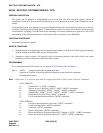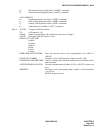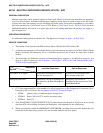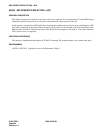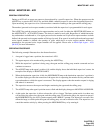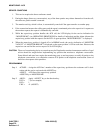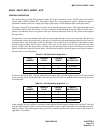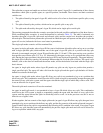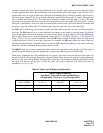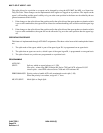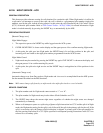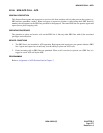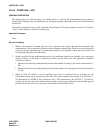
NDA-24282 (E) CHAPTER 5
Page 271
Revision 1.0
MULTI-SPLIT AGENT - ACD
M-90A MULTI-SPLIT AGENT - ACD
GENERAL DESCRIPTION
This feature allows an individual agent to handle calls from a maximum of four (ACDP software R1 or R2)/
sixteen splits (ACDP software R3). The agent’s logon ID is programmed to specify whether the agent is
permitted to handle calls from a single split (single-split mode) or from multiple splits (multi-split mode).
The agent’s logon ID is programmed to specify which splits the agent can service. The logon ID permits one to
four/sixteen specific splits to be listed, or access to any split to be indicated. If specific splits are listed, then a
priority (or preference level) is assigned to each split. There are 99 priority levels (1>99); splits can be assigned
the same level.
An agent who is servicing multiple splits will have calls assigned based on a two-level algorithm. The first level
of assignment is based on the priorities of the splits. Calls from the split with the highest priority will always be
connected before calls from splits with lower priorities. The second level of assignment is the amount of time
that the longest waiting call has been in queue. This level is only used if two or more splits have the same
priority. If splits have the same priority, then the call with the longest time in queue will always be connected
before calls that have spent less time in queue. The following examples, where an agent is servicing four queues,
illustrate the two-level algorithm.
In this case, the call in Split 1 will be connected to the agent. Split 1 has the highest priority of the splits that the
agent is serving. Thus, the fact that Split 1 has the fewest calls and the call with the shortest time in queue is not
a consideration.
In this example, the next call that is connected to the agent will be the longest waiting call from Split 2. The split
with the highest priority, Split 1, does not have any calls in queue. Split 2 and Split 3 have the same (and next
highest) priority. Thus, the longest waiting call will be selected, and that call resides in Split 2 (60 seconds as
opposed to 35 seconds).
Table 5-3 Call Distribution Algorithm - I
SPLIT
NUMBER
PRIORITY
LEVEL
CALLS IN
QUEUE
LONGEST
WAITING CALL
1 1 1 15 seconds
2 2 4 45 seconds
3 2 7 20 seconds
4 3 3 50 seconds
Table 5-4 Call Distribution Algorithm - II
SPLIT
NUMBER
PRIORITY
LEVEL
CALLS IN
QUEUE
LONGEST
WAITING CALL
110
2 2 4 60 seconds
3 2 7 35 seconds
4 3 3 65 seconds




